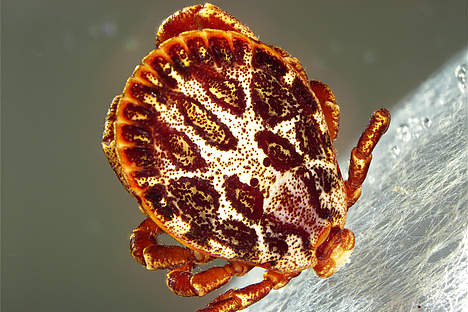Tight anchorage in the host skin is key to a tick’s feeding behavior. The attachment is aided by tick “cement”, a strong bioadhesive. Sylvia Nürnberger from the Medical University of Vienna is working together with Martina Marchetti-Deschmann from the Technical University Vienna, both cluster members, on understanding the composition and characteristics of this substance. It could then be synthetically recreated for use in biomaterial research and ultimately in clinics. Current adhesives used in patients show cytotoxic behavior, others are simply not strong enough. New adhesives inspired by nature are posing a promising alternative.
As part of the European Network of Bioadhesion the tick project has found national and international interest in the media (DerStandard, Pharmazeutische Zeitung, Zeit Online, Science Daily, American Council on Science and Health, Institute of Materials, Minerals and Mining). On June 3rd the Austrian Broadcasting Corporation ORF will feature the project among other research on bioadhesives on the show Newton.
Original press release: article on meduniwien.ac.at
